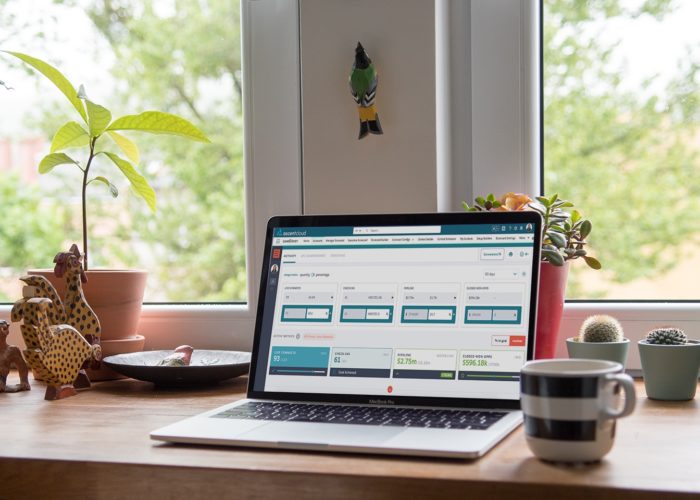According to SiriusDecisions, 74 percent of companies are spending more on sales enablement efforts than they did last year. But sales enablement teams are struggling to quantify the value of onboarding and training efforts, as well as identify what activities have the highest impact on rep productivity.
 Because the average annual turnover rate at 30 percent, management is putting increasing pressure on HR and sales enablement to hire even more quickly and shorten onboarding time so reps can get into the field and start selling. But are we actually having a negative effect on rep productivity by pulling them into the field too quickly? And how do we know if we are hiring and training reps with high potential?
Because the average annual turnover rate at 30 percent, management is putting increasing pressure on HR and sales enablement to hire even more quickly and shorten onboarding time so reps can get into the field and start selling. But are we actually having a negative effect on rep productivity by pulling them into the field too quickly? And how do we know if we are hiring and training reps with high potential?
To answer these questions, SiriusDecisions has developed a model of the lifetime value of a sales rep. While sales enablement has become nearly synonymous with onboarding and boot camps, research demonstrates that the largest productivity gains are realized by focusing on quality levers — in hiring, onboarding and ongoing coaching. Here are three key levers of enablement to maximize the revenue impact of every rep in your organization.
How to maximize lifetime value of talent with sales enablement
Sales enablement tip #1: Identify what makes a good hire – and focus on those attributes.
“Hire better sales talent faster” probably sounds familiar. Yet, sales enablement has yet to fully integrate with HR when recruiting sales talent. SiriusDecisions recommends that sales enablement lead the development of competency-based scorecards to manage sales recruitment. Sales enablement and sales leadership should jointly define what behaviors and activities lead to sales success. Competency based scorecards can help align teams on objective criteria to attract, identify and evaluate talent, shortening hiring time and ultimately identifying reps more likely to succeed.
Even more innovative sales enablement teams are defining competencies based on behaviors that have actually proven to yield higher customer engagement. Sales engagement and activity management platforms can help identify the tactics and activities of reps that deliver higher quality customer engagement and shorter sales cycles based on an organization’s specific sales process and buyers
Sales enablement tip #2: Focus on quality of onboarding instead of time to onboard.
Managers are under pressure to onboard and deploy reps as quickly as possible. While it can be tempting to cut training short to get reps into the field, it can have a negative long-term impact. Sales enablement teams need to focus on the quality and progression of onboarding in:
- Content mastery: Orienting reps to available resources — how to find and use resources, product knowledge and value proposition, etc.
- Application: Teaching reps how content maps to industries, customer pains and other variables that will enable them to effectively engage with customers.
- Field execution: Unifying the content, product knowledge and skills developed in onboarding in practice – when in the field and with customers.
Taking a competency-centered approach instead of a time-centered approach — combined with certifying rep performance throughout the onboarding process — adds measurable value to overall sales rep ROI. Organizations can consider “tiering” training (basic, progressive, advanced) and putting reps into the field before onboarding is complete.
However, a formal, comprehensive curriculum that reinforces the skills needed to be successful (based on the hiring competencies already identified) adds quantifiable value to sales rep productivity. A sales engagement platform that captures engagement statistics about presentations and decks can help identify best practices based on your sales process — the best content based on buyer segment and how to present it for maximum impact.
Leading sales organizations also tap into their successful reps to support onboarding. Top-performing reps sharing real-life examples show ramping reps what actually works for your buyers and sales cycle. For example, video recordings of successful meetings can help new reps gain practical examples of when and how to use content.
Then, leaders can archive outstanding call recordings and meeting recording videos in a “pitch perfect” library, giving new and experienced reps alike a place to go for new ways to pitch content that are proven to engage customers. Creating an environment where reps can learn from the best practices of their peers will take some of the burden off of sales management, empower reps and strengthen the team — all of which will drive improved sales results and help sales organizations see greater value from reps.
Sales enablement tip #3: Deliver continuous coaching.
While improving the talent acquisition and onboarding phases of the rep lifecycle can certainly yield benefits, SiriusDecisions finds that enablement efforts targeted at ongoing coaching and certification actually yield the greatest impact (often more than twice the impact from onboarding efforts). Ongoing coaching throughout the rep lifecycle not only improves quota attainment but also improves rep tenure.
Research (and common sense) indicate that higher performers are less likely to turn over, and reps that receive ongoing coaching are less likely to leave. SiriusDecisions research confirms that long-term “feeding and watering” of high-performing sales talent provides the most significant benefit in extending rep lifetime value.
Unfortunately, sales leaders devote less than 20 percent of their time to coaching, and many lack the insight and tools needed to coach effectively. To maximize coaching efficiency for reps and leaders, SiriusDecisions recommends investing in “unassisted coaching” by creating “micro-learning” moments and alternatives to live coaching such as audio and video recordings. A sales engagement platform allows managers to identify top performers and struggling reps to deliver immediate and metrics-based coaching based on actual customer engagement. Meeting recordings can provide DVR-like functionality to review actual customer feedback, enable more effective one-on-ones and role plays, and scale best practices.
Once reps are armed with best practices and empowered to succeed, managers need to keep reps motivated using the principles of competition and recognition. A sales engagement platform such as ClearSlide paired with an activity management system is a particularly potent combination, increasing visibility to critical sales KPIs, improving leader insight and keeping reps engaged in the right behaviors to deliver revenue.
While field reps often dismiss ongoing certification efforts, it is important to note that 67 percent of experienced reps cite a lack of ongoing training as the reason for leaving companies. Sales enablement should focus on experienced reps in the same way as new reps and create an effective certification program rooted in competency development. Certifications should once again encompass content mastery, ability to apply the content and field execution — helping ensure experienced reps get the value of ongoing training.
The mandate for sales enablement is broad, and using a model for maximizing lifetime rep value can help teams prioritize and focus on the levers with the greatest potential impact. Using a research-based framework can help organizations balance the pressure to hire and onboard reps faster with the need to develop top-quality reps and increase their value over time.
To learn more about this powerful framework, watch this webinar from SiriusDecisions on “The Art and Angst of Sales Talent Management.” It can help you add measurable ROI to every rep who joins your organization.



